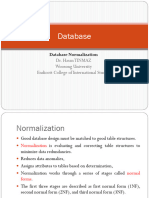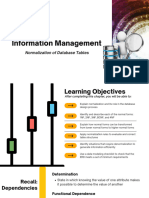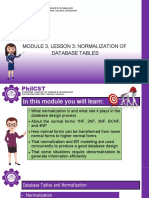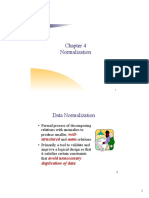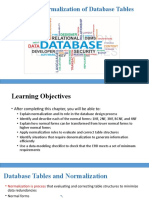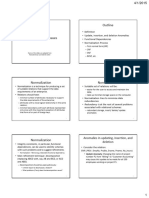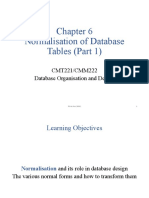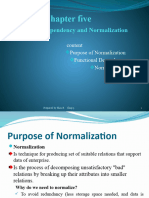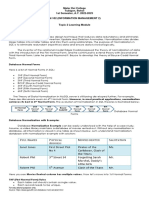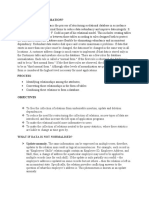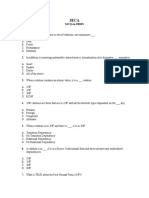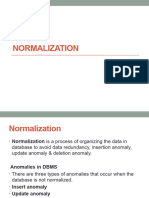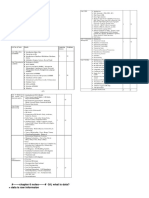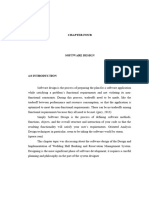0% found this document useful (0 votes)
87 views65 pagesChapter 4 - Normalization
The document discusses database normalization. It begins by defining normalization and explaining its purpose and benefits. It then covers the normalization process, including identifying functional dependencies and converting a database structure to first, second, and third normal forms. Various normalization concepts are explained such as anomalies, full and partial dependencies, and transitive dependencies. Examples are provided to illustrate the normalization steps and how they reduce data issues like redundancy.
Uploaded by
firaCopyright
© © All Rights Reserved
We take content rights seriously. If you suspect this is your content, claim it here.
Available Formats
Download as PDF, TXT or read online on Scribd
0% found this document useful (0 votes)
87 views65 pagesChapter 4 - Normalization
The document discusses database normalization. It begins by defining normalization and explaining its purpose and benefits. It then covers the normalization process, including identifying functional dependencies and converting a database structure to first, second, and third normal forms. Various normalization concepts are explained such as anomalies, full and partial dependencies, and transitive dependencies. Examples are provided to illustrate the normalization steps and how they reduce data issues like redundancy.
Uploaded by
firaCopyright
© © All Rights Reserved
We take content rights seriously. If you suspect this is your content, claim it here.
Available Formats
Download as PDF, TXT or read online on Scribd
/ 65















